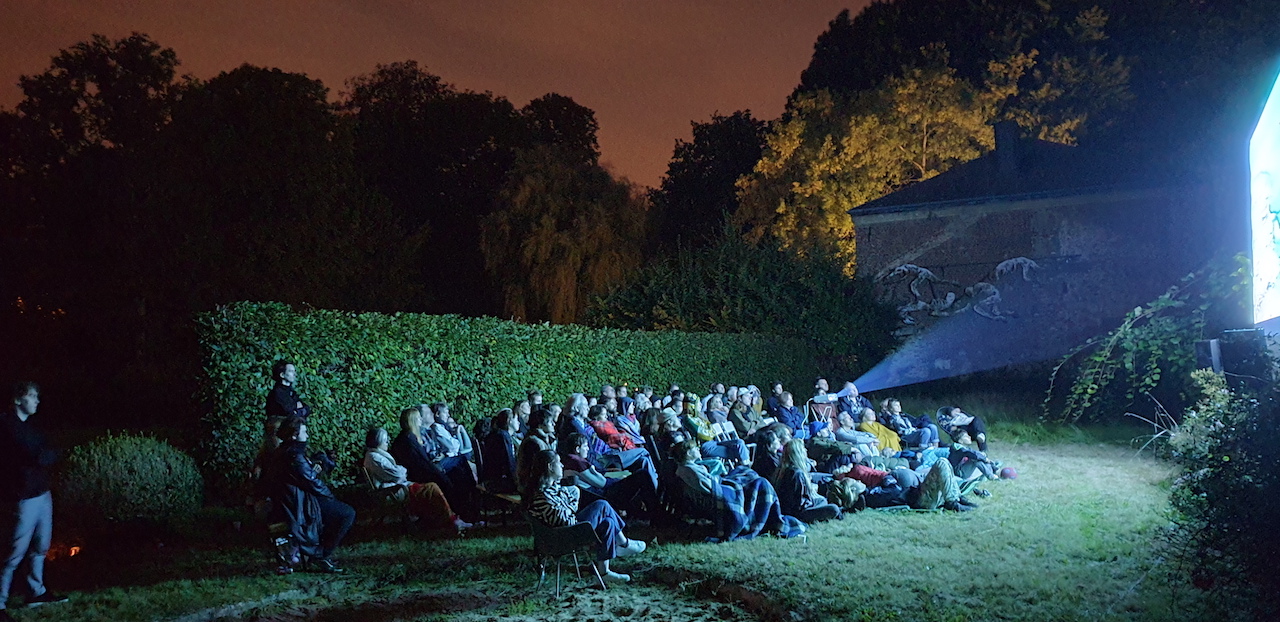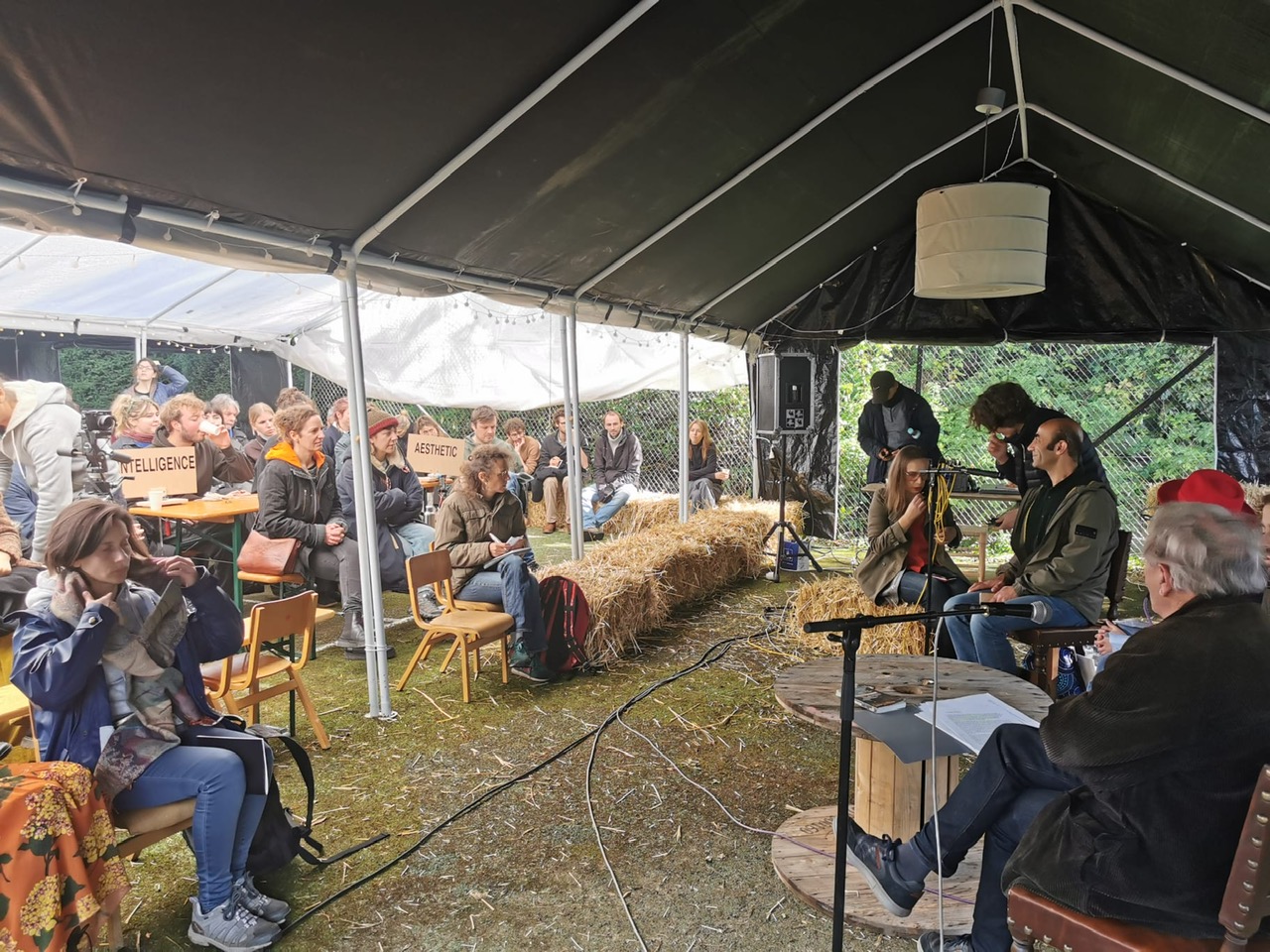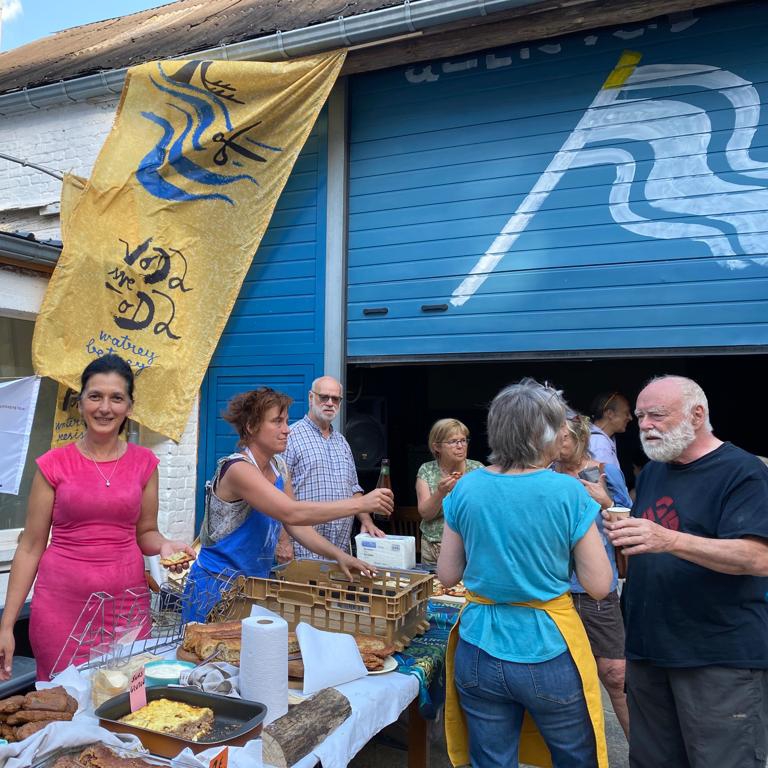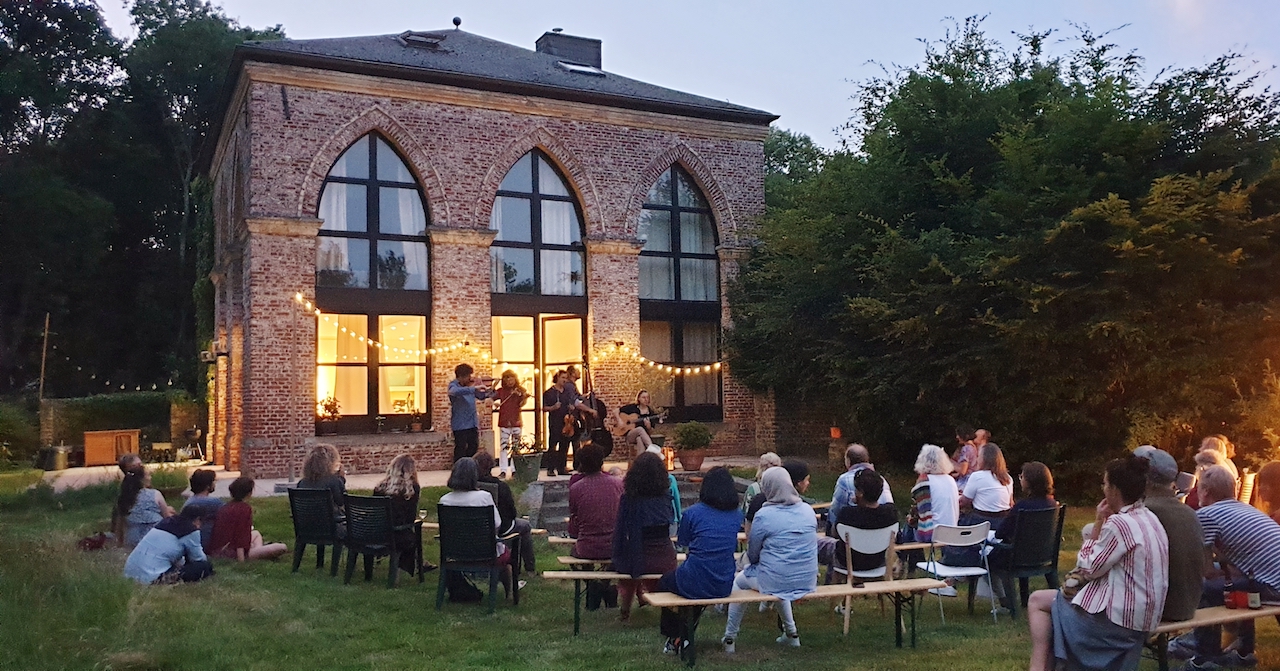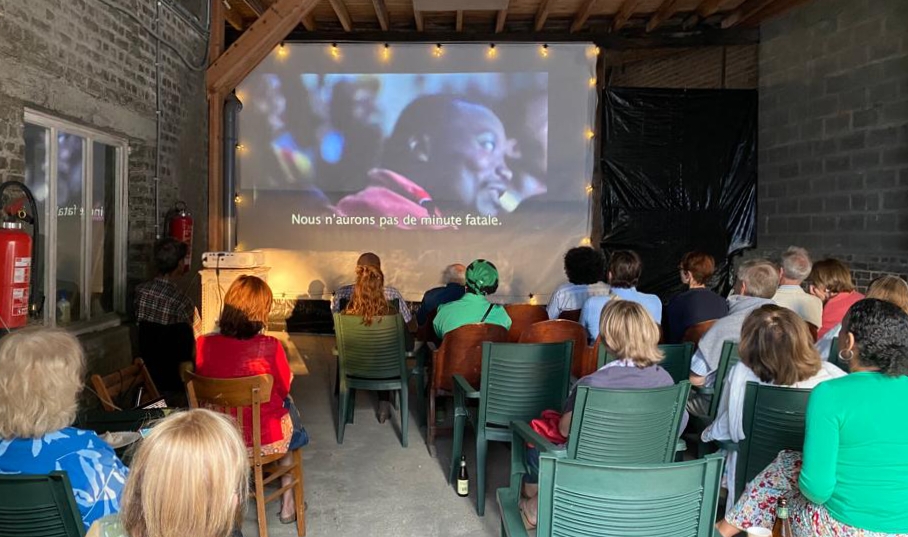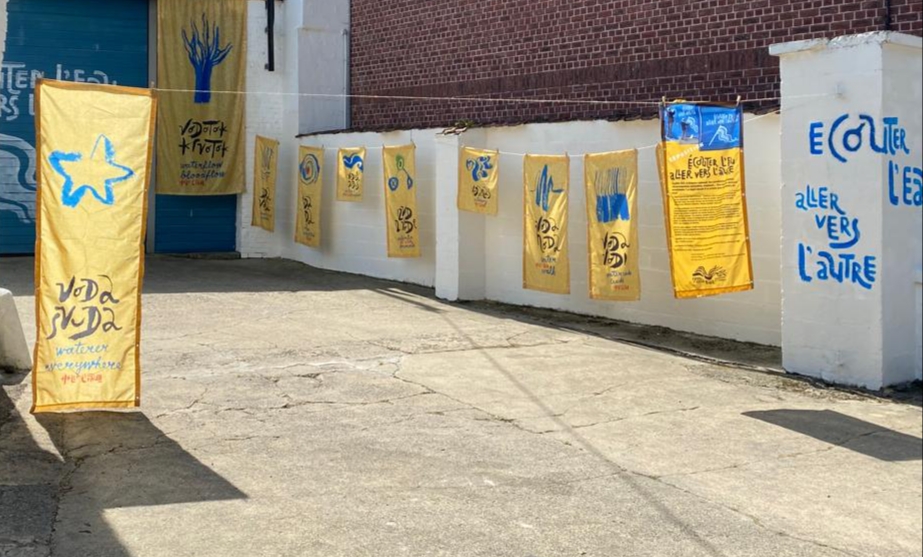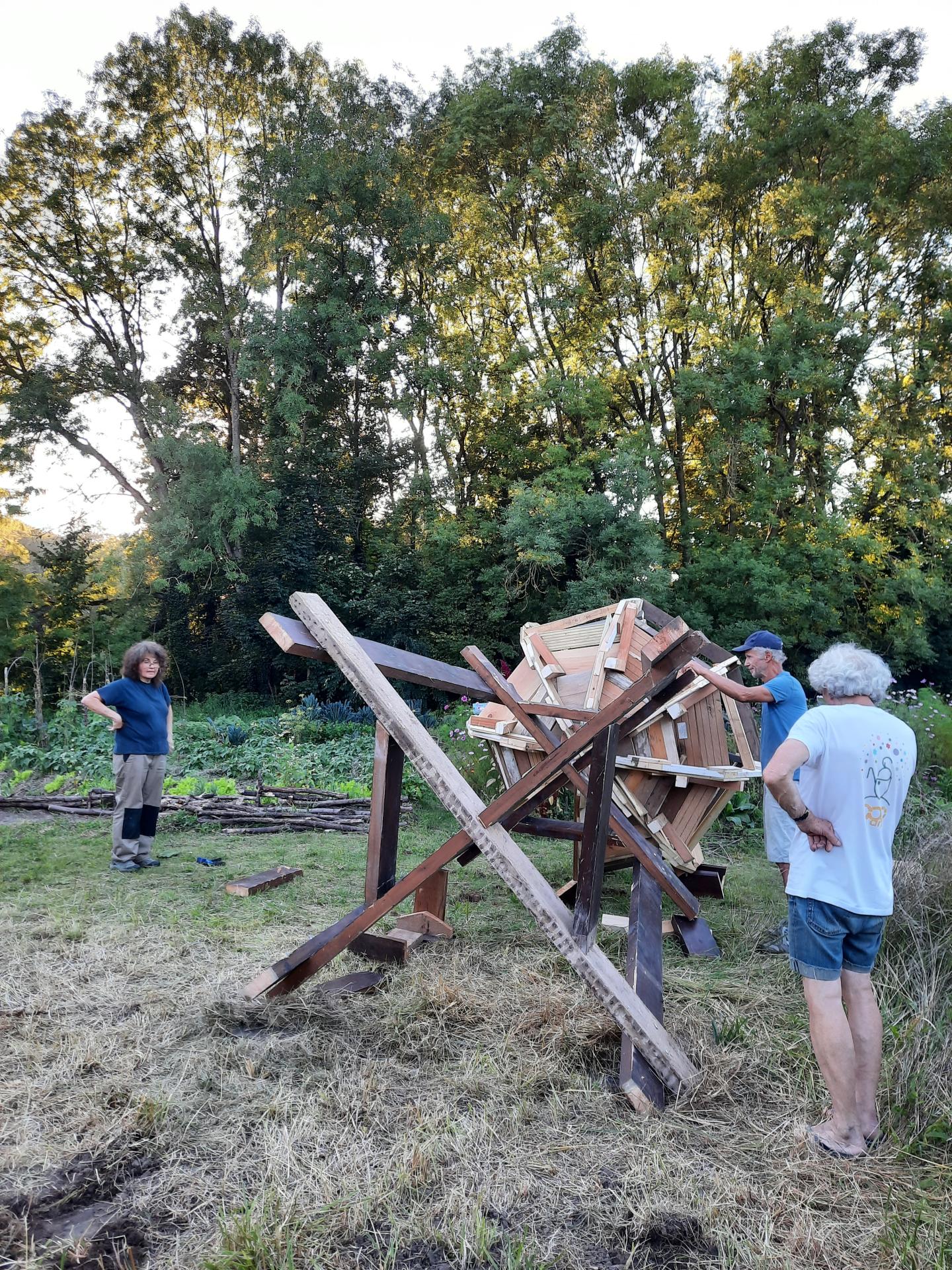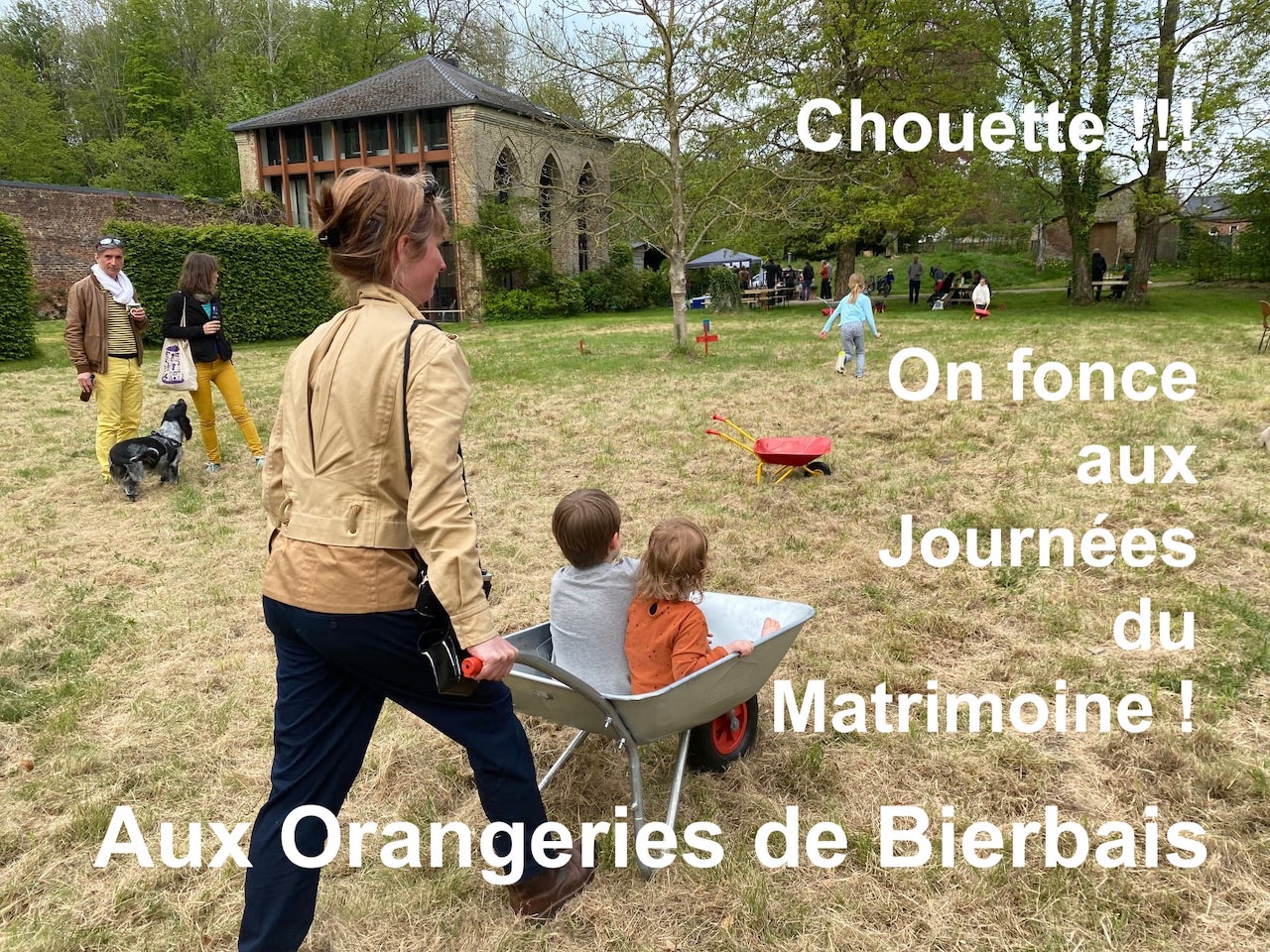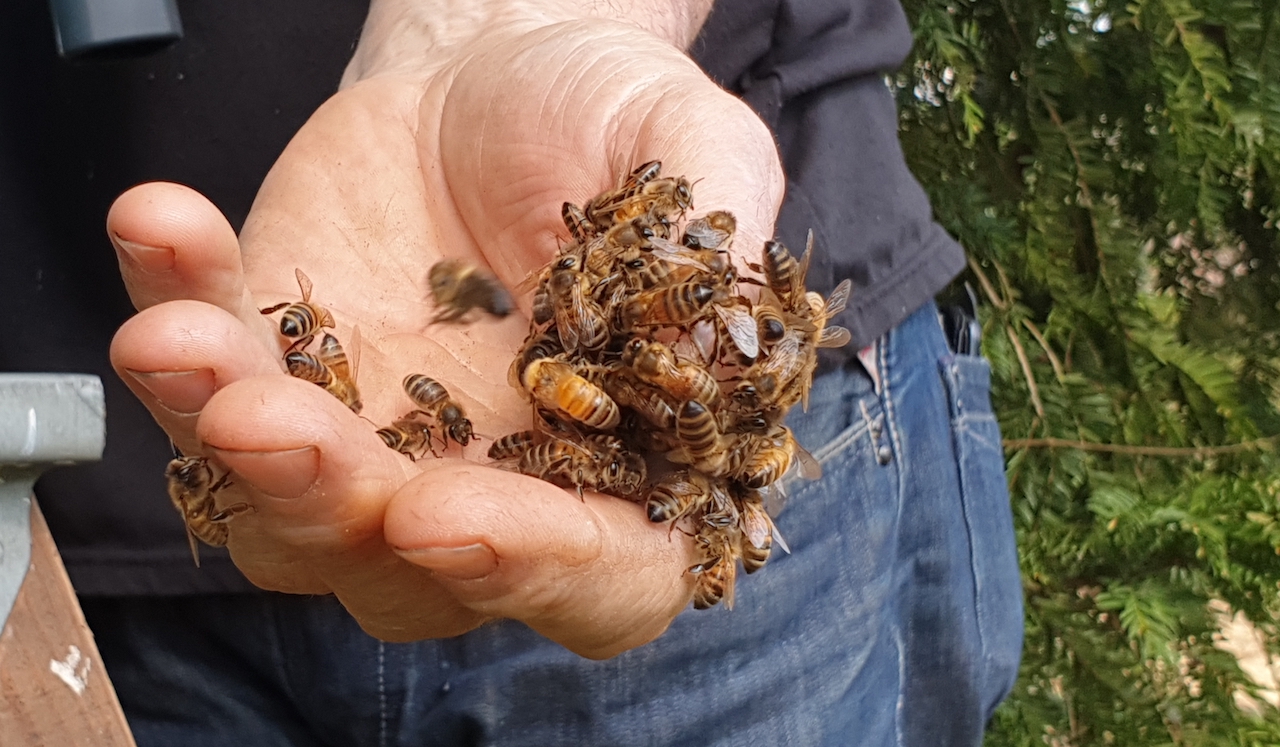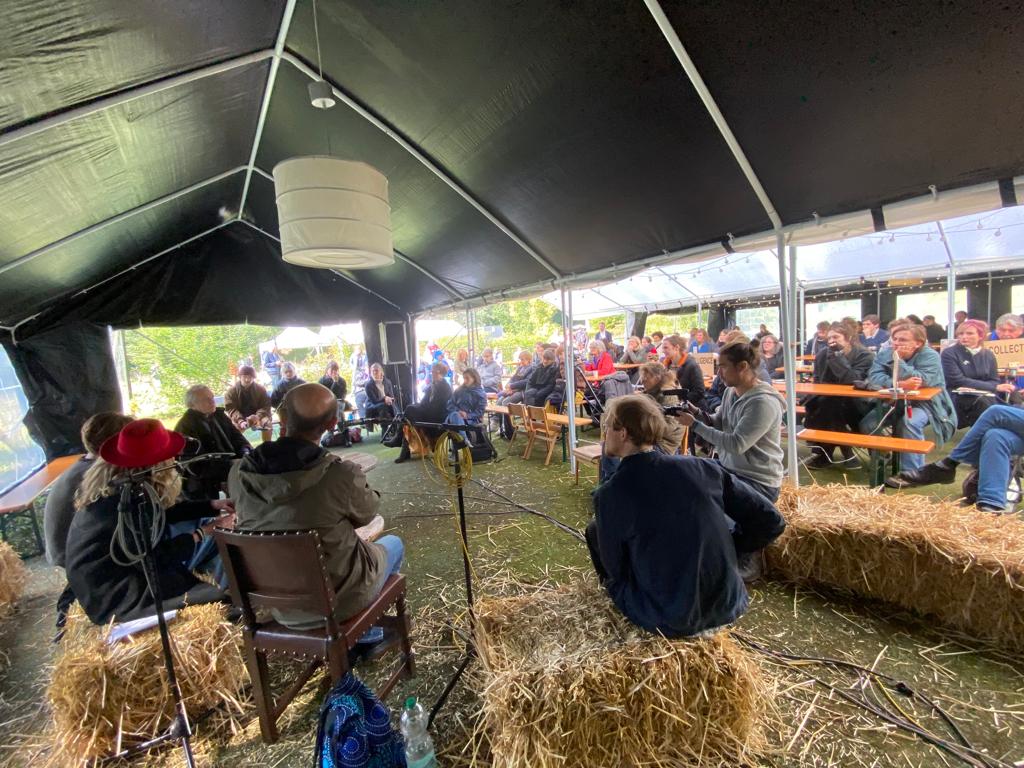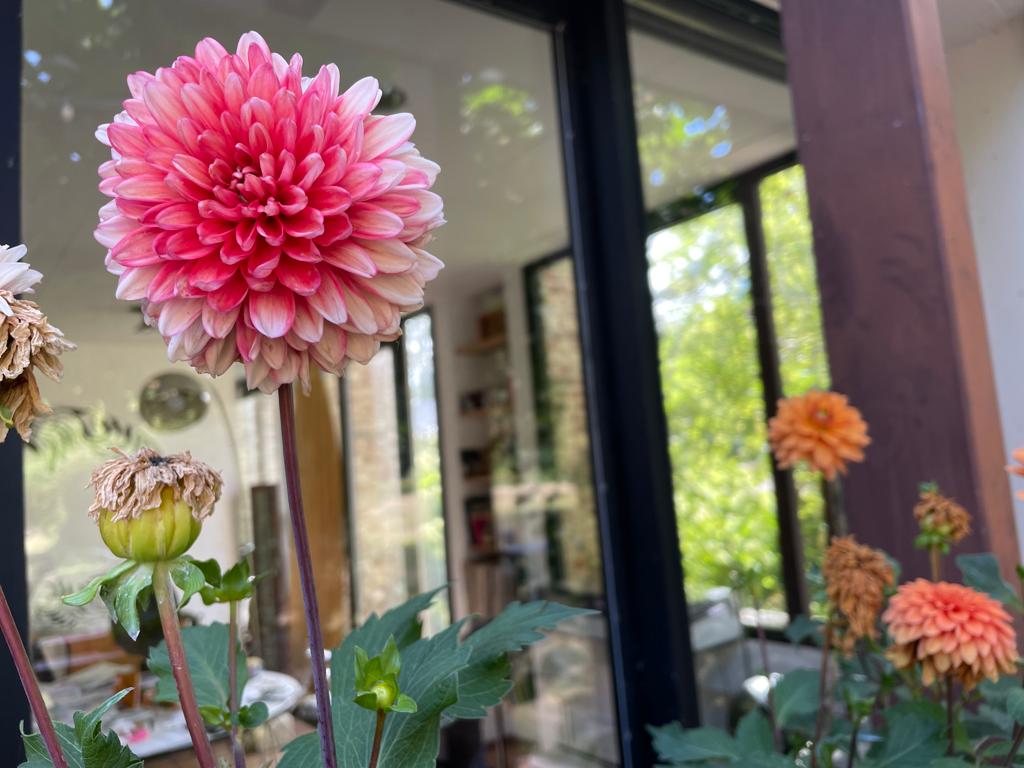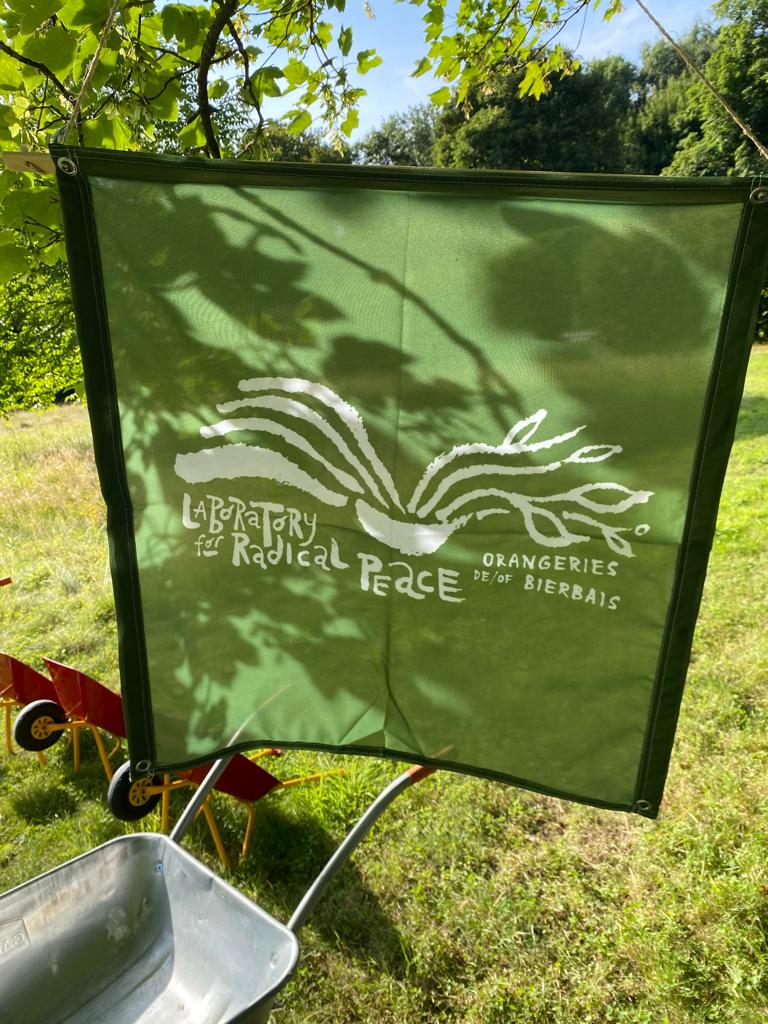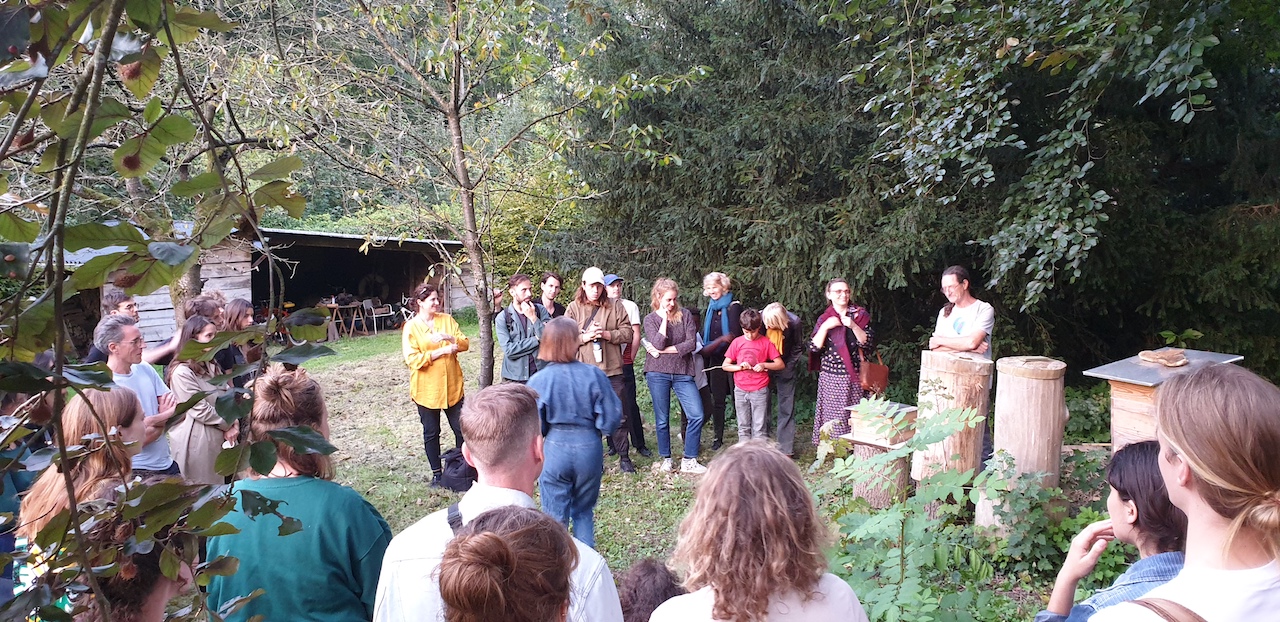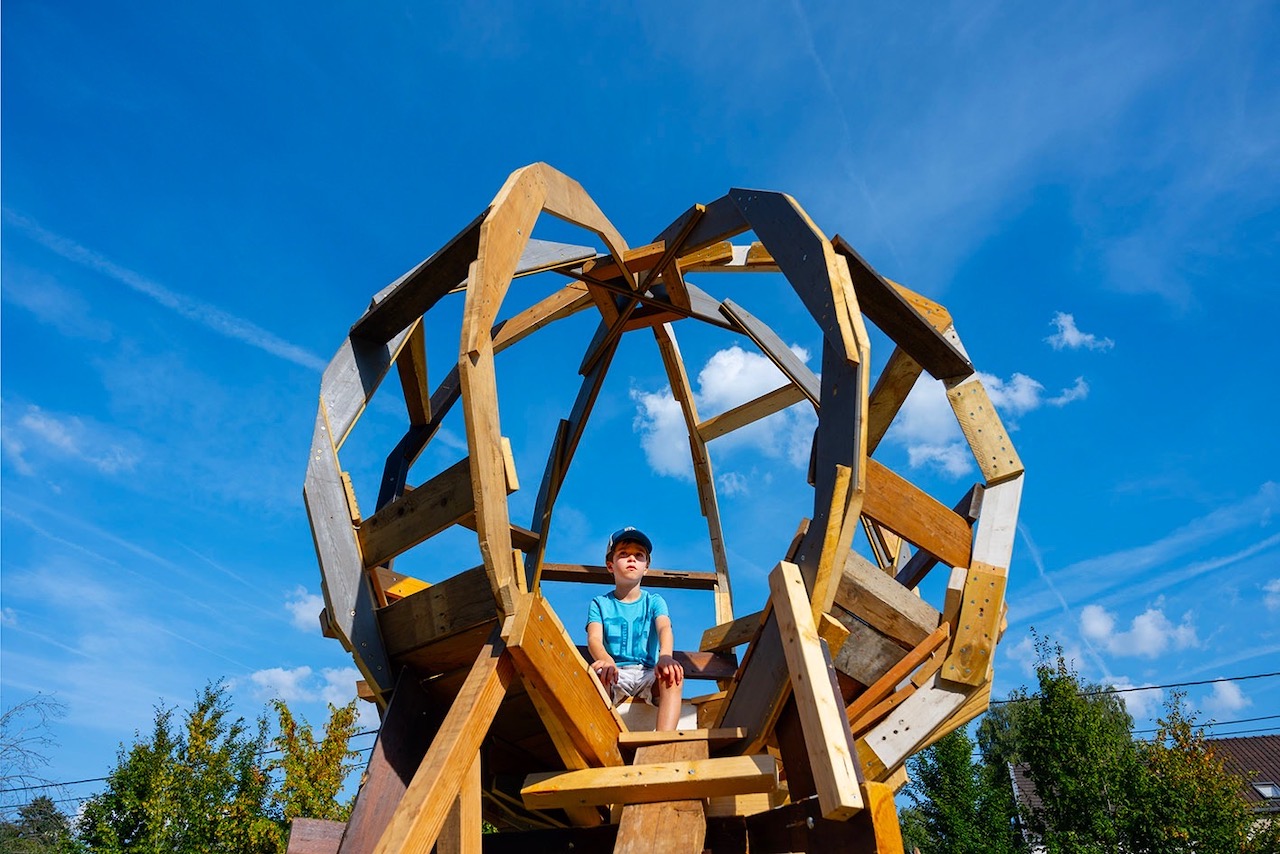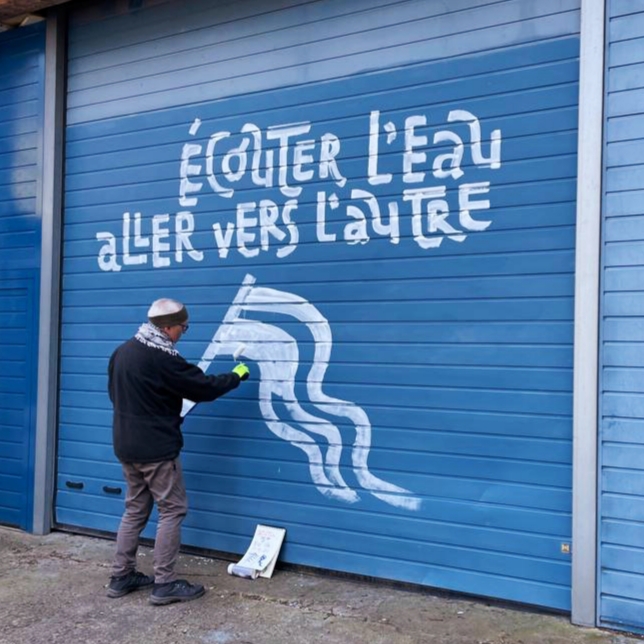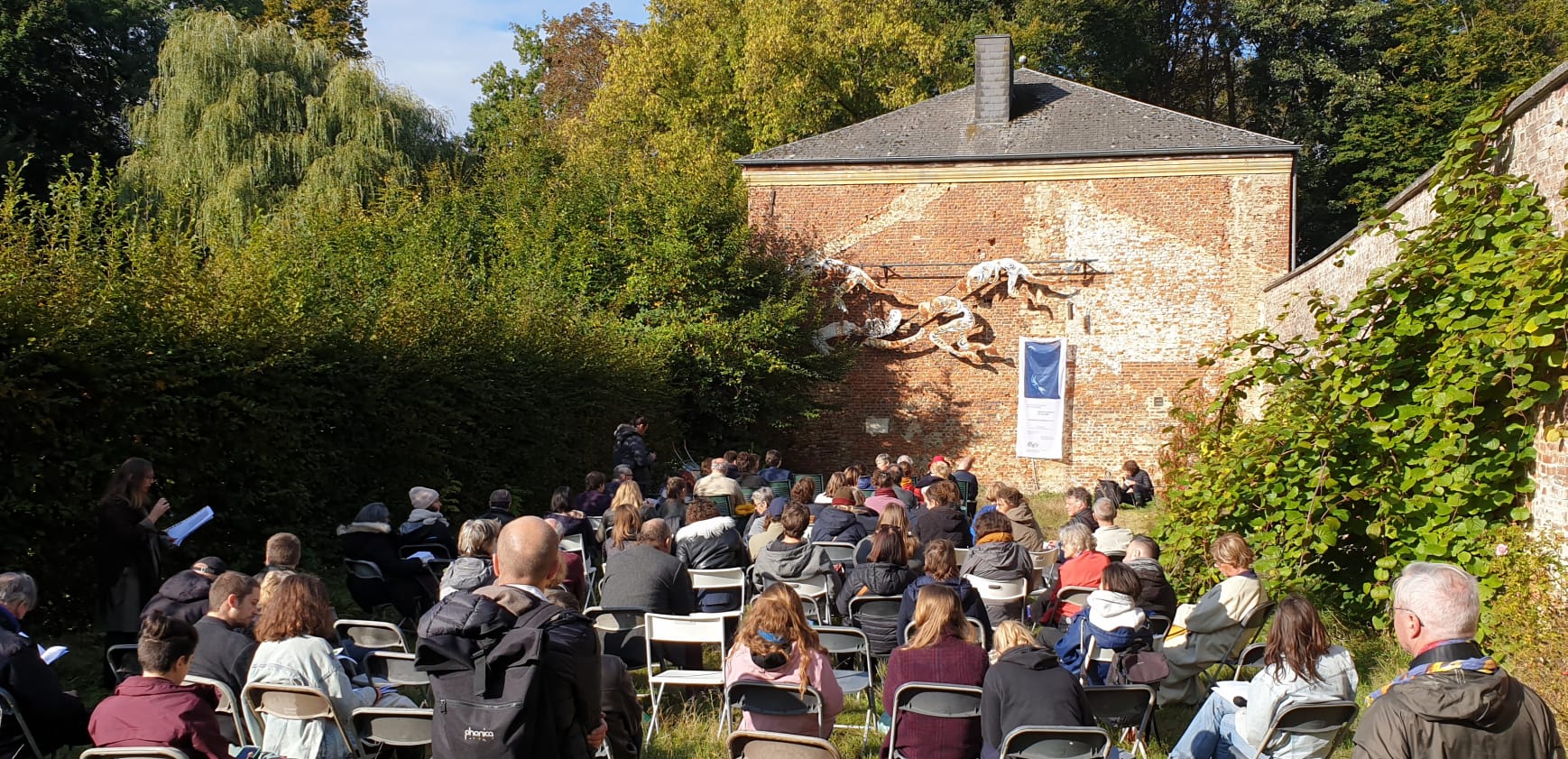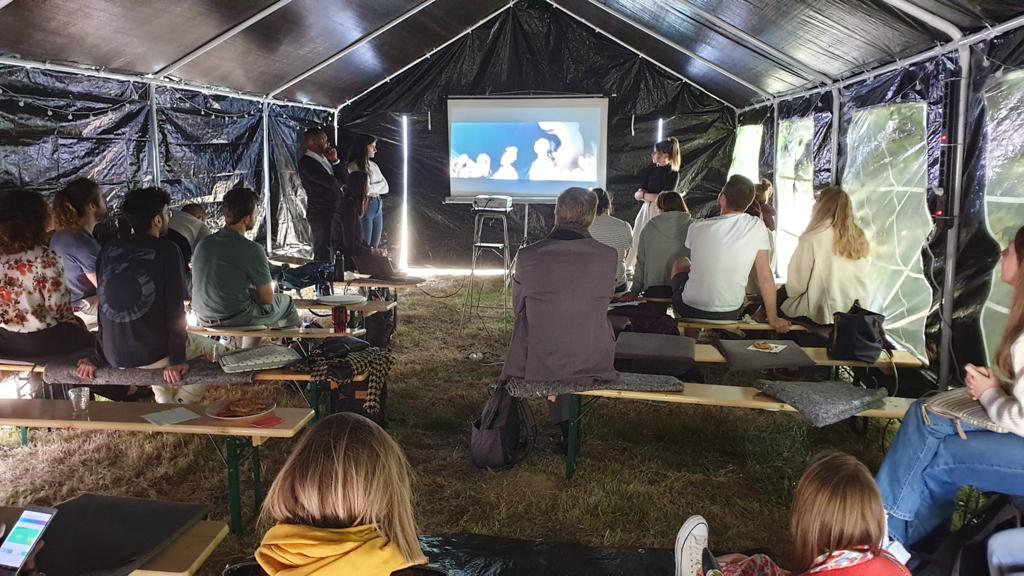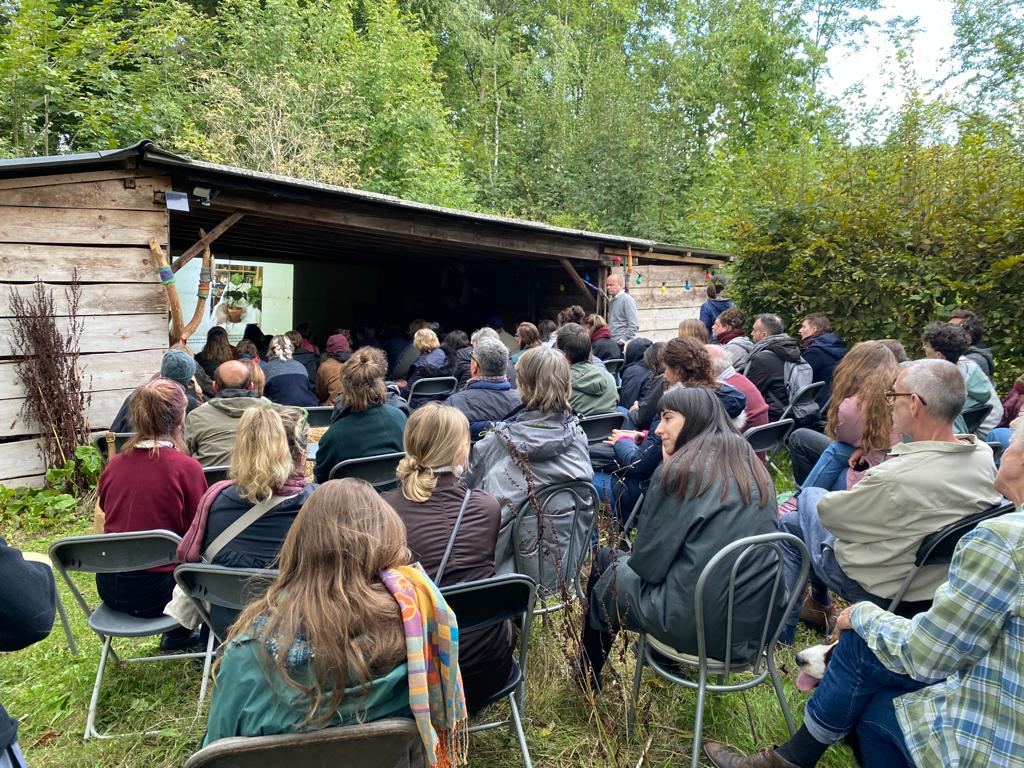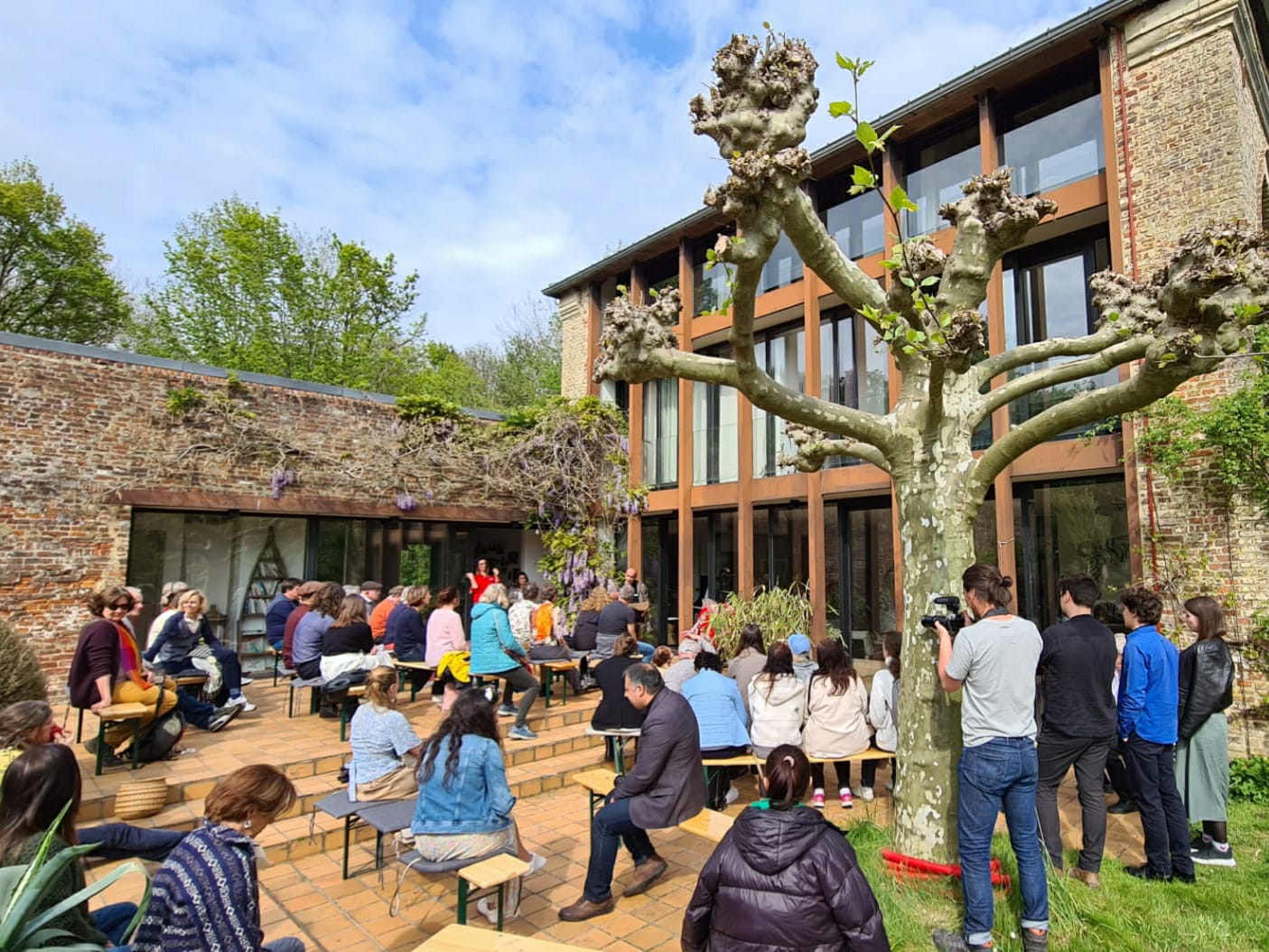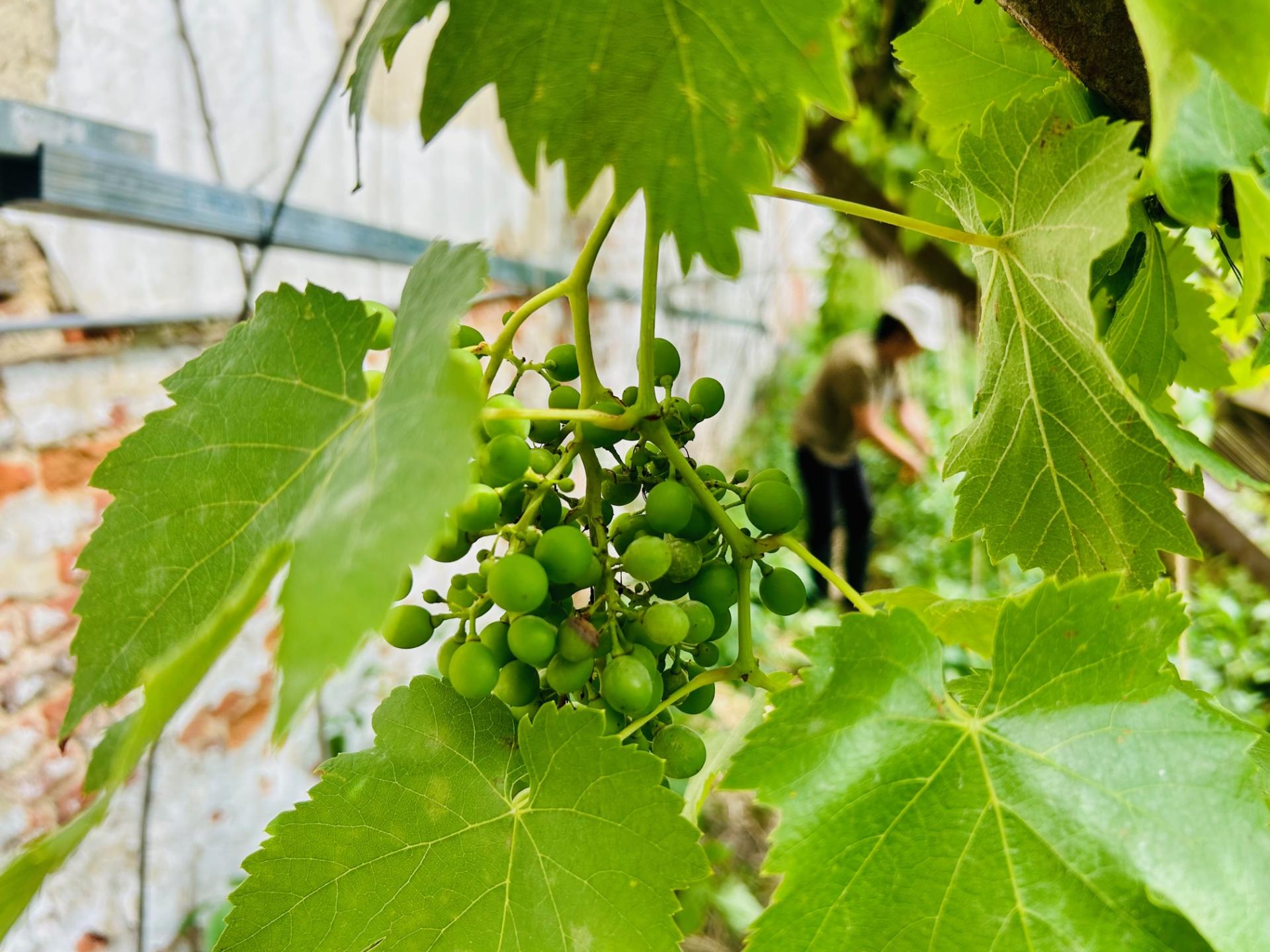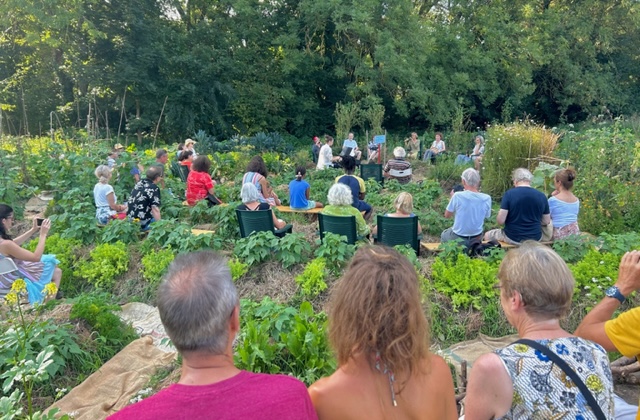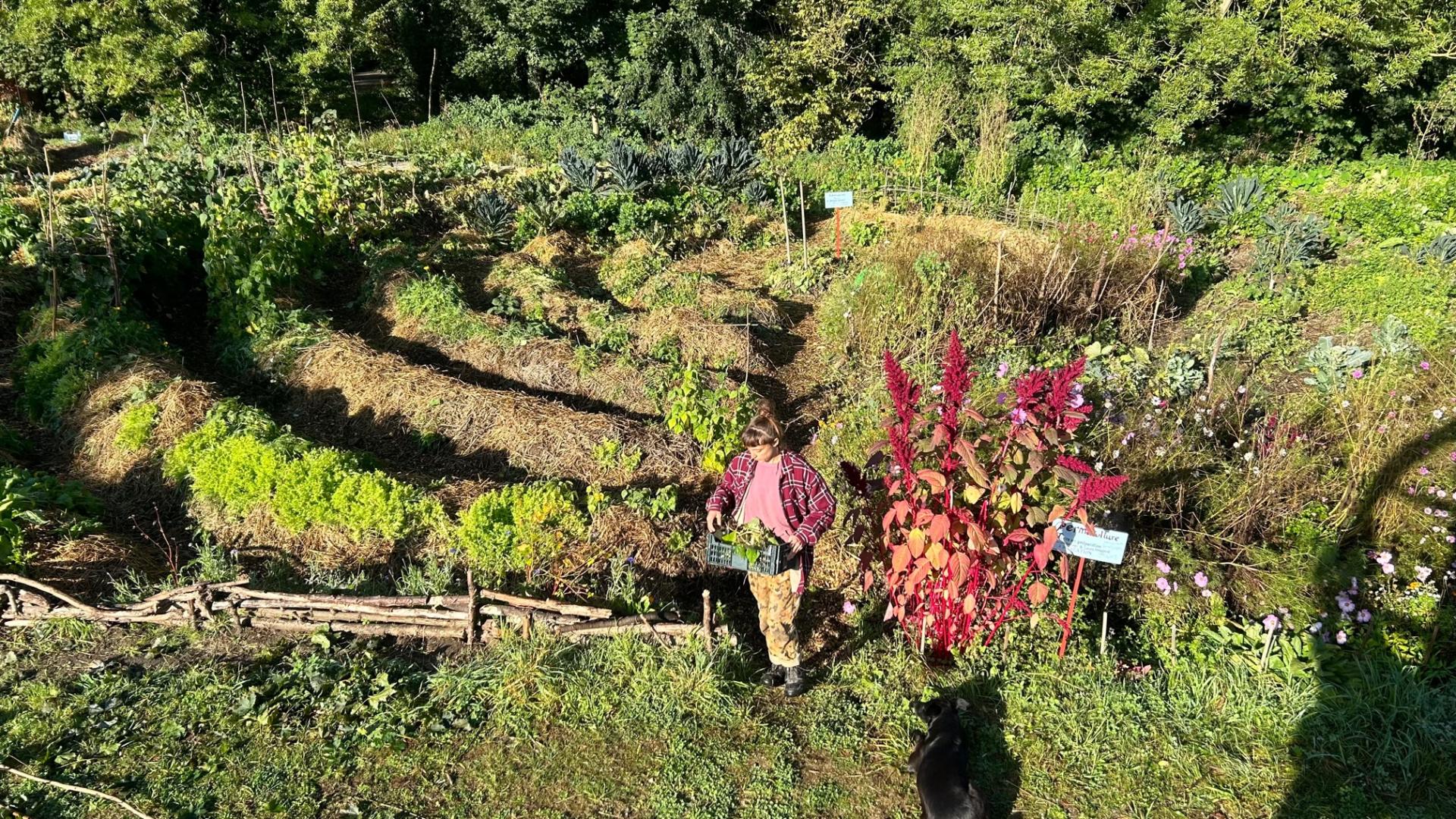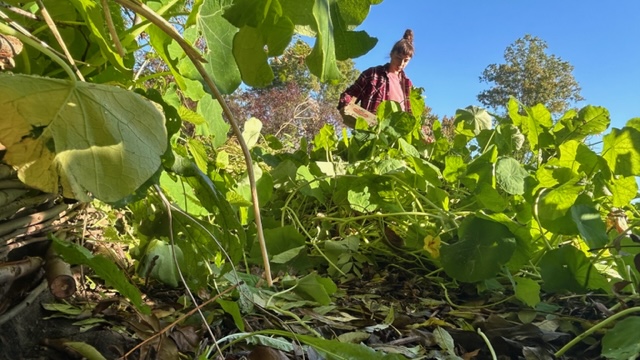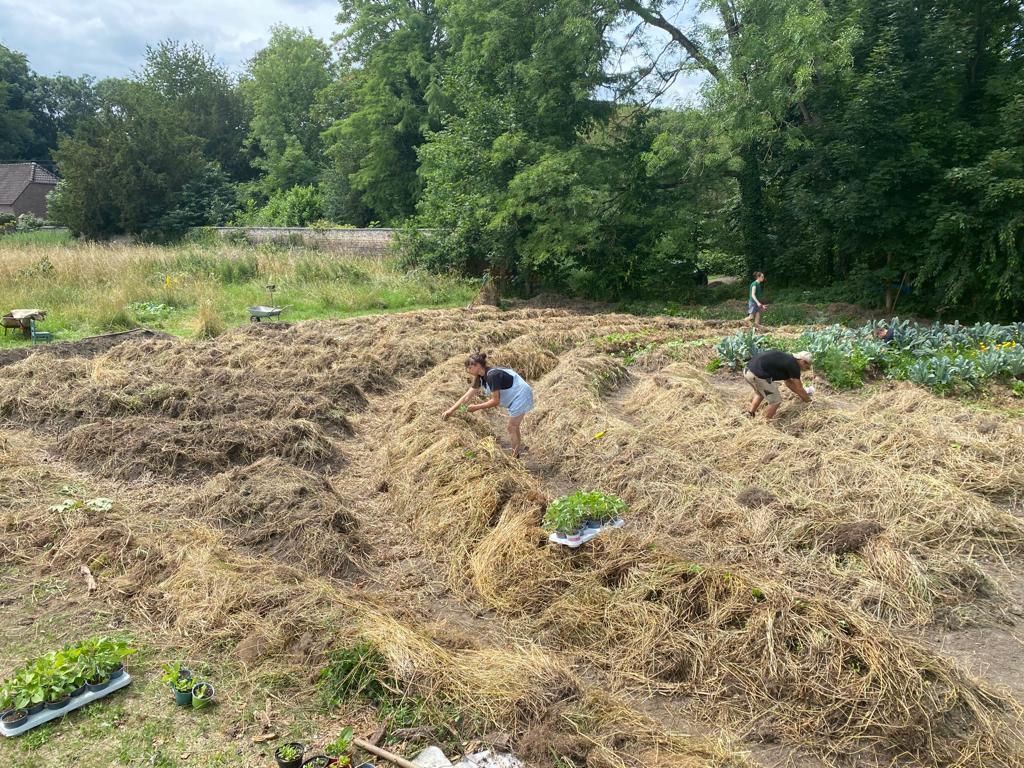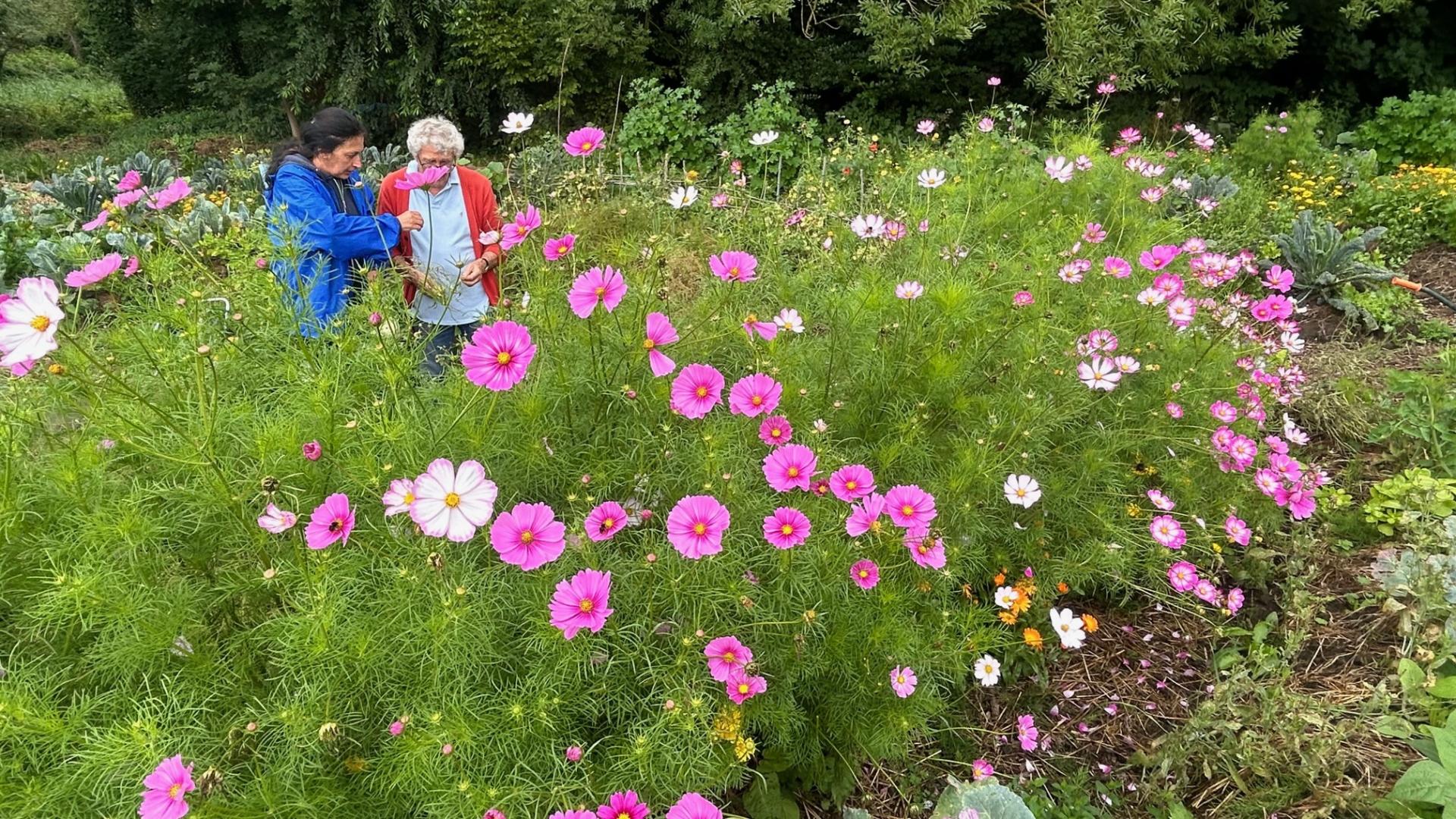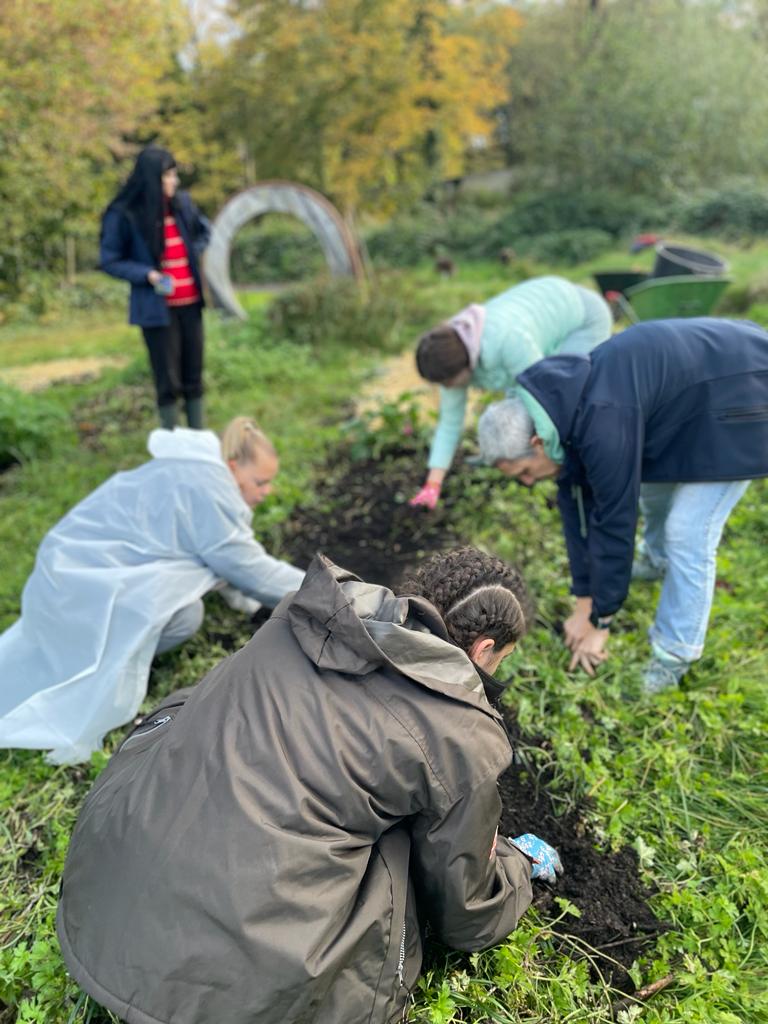The Orangeries of Bierbais
Basic information
Project Title
The Orangeries of Bierbais
Full project title
Turning an historical greenhouses park into an open laboratory of life
Category
Reconnecting with nature
Project Description
The project revitalized and opened up to the public a park that once housed monumental greenhouses admired throughout Europe, but which had fallen into oblivion. A collective of artists and researchers succeeded in transforming the site into a laboratory for experimentation and the exchange of knowledge and know-how, with a global permaculture approach. The project has revealed a historical heritage, and its conversion has promoted biodiversity and changed mentalities into a community.
Geographical Scope
Local
Project Region
Wallonia-Brussels Federation , Belgium
Urban or rural issues
It addresses urban-rural linkages
Physical or other transformations
It refers to other types of transformations (soft investment)
EU Programme or fund
No
Description of the project
Summary
General objective of the project:
To participate positively in necessary societal changes
to face future challenges
Target groups:
- On the front line: the artists and researchers involved
- In the second line: local populations in the village of
Mont-st-Guibert, in the Province of Walloon Brabant in Belgium
Specific objectives :
- To encourage people to put into practice a new approach to life, a
way of occupying the territory in a more respectful way in favor
of biodiversity
- To reconfigure a historic heritage park and
its building in a permaculture park, inclusive, open to another world
- To experiment and propose new practices related to
local ecosystems responding to climate emergencies and
war context inspired by cooperation and aesthetics
observed in nature
Main results obtained:
1. Development and opening of a forgotten historical heritage park, as a unifying element to create social links
2. Voluntary involvement and creativity of numerous artists and researchers (around 40, mostly staying in residencies)
3. Putting into practice a global approach in permaculture, inclusive, multidisciplinary
4. Contribution to the safeguarding and regeneration of local biodiversity through the implementation of more sustainable management (composting, water recovery, late mowing, etc.)
5. Large participation of the public in awareness-raising activities in favor of a change in mentality: exhibitions, concerts, workshops, participatory projects, internships, (social) media development
6. Renewed hope after the Covid health crisis and the national floods of July 2021
7. Creation of town-countryside synergies and between neighbors by relying on the idea of complementarity
8. Establishment of strong partnerships (associations and other structures, local authorities, important cultural institutions: Molenbeek Academy, HIAP, Helsinki, Meet Factory, Prague, Center of Tolerance, Zagreb,…)
9. Obtaining various public and private interest/support
To participate positively in necessary societal changes
to face future challenges
Target groups:
- On the front line: the artists and researchers involved
- In the second line: local populations in the village of
Mont-st-Guibert, in the Province of Walloon Brabant in Belgium
Specific objectives :
- To encourage people to put into practice a new approach to life, a
way of occupying the territory in a more respectful way in favor
of biodiversity
- To reconfigure a historic heritage park and
its building in a permaculture park, inclusive, open to another world
- To experiment and propose new practices related to
local ecosystems responding to climate emergencies and
war context inspired by cooperation and aesthetics
observed in nature
Main results obtained:
1. Development and opening of a forgotten historical heritage park, as a unifying element to create social links
2. Voluntary involvement and creativity of numerous artists and researchers (around 40, mostly staying in residencies)
3. Putting into practice a global approach in permaculture, inclusive, multidisciplinary
4. Contribution to the safeguarding and regeneration of local biodiversity through the implementation of more sustainable management (composting, water recovery, late mowing, etc.)
5. Large participation of the public in awareness-raising activities in favor of a change in mentality: exhibitions, concerts, workshops, participatory projects, internships, (social) media development
6. Renewed hope after the Covid health crisis and the national floods of July 2021
7. Creation of town-countryside synergies and between neighbors by relying on the idea of complementarity
8. Establishment of strong partnerships (associations and other structures, local authorities, important cultural institutions: Molenbeek Academy, HIAP, Helsinki, Meet Factory, Prague, Center of Tolerance, Zagreb,…)
9. Obtaining various public and private interest/support
Key objectives for sustainability
The main objectives of the project were to :
- Promote a forgotten heritage: research was carried out and various tools were created, including wikipedia pages, educational panels and publications on social networks.
- Contribute to reinforcing the local collective memory: the project enabled the public to reappropriate an important history / heritage - through the organization of festive events, such as a special edition of the artists' trail in the park or a first participation in the European Heritage Days.
- Encouraging the mobilization and creativity of artists and researchers in an approach that listens to the living world: the project has invited artists and researchers from various European countries to participate in the reconfiguration of the site, and they themselves are experimenting with the very open approach of permaculture. The Parc of Orangeries of Bierbais has become a reference not only locally, but also internationally, with a number of important partnerships (Académie des Arts de Molenbeek; HIAP, Helsinky; MeetFactory, Prag; Center of Tolerance, Zagreb, etc.)
- Encouraging the practice of experimentation and sharing: project participants were invited to think of themselves as part of nature, to enable each other to play their role to the full, develop their skills, in a spirit of complementarity and cooperation. The artists' and researchers' residencies gave them the opportunity to experiment, acquire and exchange knowledge, and leave concrete traces of their experience.
- Raising awareness of the aesthetic dimension: the project has enabled this historic park, once a beacon of beauty on a European scale, then closed and unremarkable, to regain its lustre. Not the elitist glamour of yesteryear, but one that reflects our desire for a society that promotes biodiversity, encourages resilience and respect for the living. A series of residencies and public activities now make it possible to raise awareness of the aesthetic dimension.
- Promote a forgotten heritage: research was carried out and various tools were created, including wikipedia pages, educational panels and publications on social networks.
- Contribute to reinforcing the local collective memory: the project enabled the public to reappropriate an important history / heritage - through the organization of festive events, such as a special edition of the artists' trail in the park or a first participation in the European Heritage Days.
- Encouraging the mobilization and creativity of artists and researchers in an approach that listens to the living world: the project has invited artists and researchers from various European countries to participate in the reconfiguration of the site, and they themselves are experimenting with the very open approach of permaculture. The Parc of Orangeries of Bierbais has become a reference not only locally, but also internationally, with a number of important partnerships (Académie des Arts de Molenbeek; HIAP, Helsinky; MeetFactory, Prag; Center of Tolerance, Zagreb, etc.)
- Encouraging the practice of experimentation and sharing: project participants were invited to think of themselves as part of nature, to enable each other to play their role to the full, develop their skills, in a spirit of complementarity and cooperation. The artists' and researchers' residencies gave them the opportunity to experiment, acquire and exchange knowledge, and leave concrete traces of their experience.
- Raising awareness of the aesthetic dimension: the project has enabled this historic park, once a beacon of beauty on a European scale, then closed and unremarkable, to regain its lustre. Not the elitist glamour of yesteryear, but one that reflects our desire for a society that promotes biodiversity, encourages resilience and respect for the living. A series of residencies and public activities now make it possible to raise awareness of the aesthetic dimension.
Key objectives for aesthetics and quality
The project aimed to change the image of the village, described in the newspapers as disinterested in heritage and culture, and attached only to mass consumption.
Thanks to the research and overall development of the Orangeries de Bierbais park, the village is now recognized as an attractive location, and even a driving force for artists' residencies in its province (Walloon Brabant).
The village's appearance has also changed. The village had forgotten about an important heritage that today actually lies in the middle of the village. Inhabitants were unaware of the very appearance of this park, protected for over a century by high surrounding walls.
The park's flower-filled vegetable garden, with its new aesthetic forms, rivals the elegant shapes of the remains of the orangeries, which still exist. Both are inspiring for the artists and for the public.
One of the other successes of this project was to convince the (private) owners of the site to make it available to the artists free of charge. In return, the artists and researchers succeeded in demonstrating their ability to transform such a place, and the need for it as a laboratory/incubator for transforming our environment, giving it an indispensable aesthetic dimension.
Thanks to the research and overall development of the Orangeries de Bierbais park, the village is now recognized as an attractive location, and even a driving force for artists' residencies in its province (Walloon Brabant).
The village's appearance has also changed. The village had forgotten about an important heritage that today actually lies in the middle of the village. Inhabitants were unaware of the very appearance of this park, protected for over a century by high surrounding walls.
The park's flower-filled vegetable garden, with its new aesthetic forms, rivals the elegant shapes of the remains of the orangeries, which still exist. Both are inspiring for the artists and for the public.
One of the other successes of this project was to convince the (private) owners of the site to make it available to the artists free of charge. In return, the artists and researchers succeeded in demonstrating their ability to transform such a place, and the need for it as a laboratory/incubator for transforming our environment, giving it an indispensable aesthetic dimension.
Key objectives for inclusion
The project has helped build bridges between the artists and the local public, as well as with inclusive local structures, such as the Institution de Bierbais (for young people in difficulty) or the teachers and pupils of the Hayeffes school.
While most of the artists have a high level of training, many are self-taught. And, as we've seen at the biggest popular events, the audience was very diverse in terms of socio-economic ability.
A partnership was created with Service Citoyen, an association that provides support for volunteers (aged 18-25) on projects with a societal value, such as the Orangeries de Bierbais. The project thus benefited from 2 volunteers for 6 months and a one-day workcamp involving some 15 young people.
With the exception of one modestly-priced concert, all the rest of the programming (18 months) was free of charge, making the project very affordable.
As far as transport is concerned, for artists and audiences coming from further afield, shared mobility has always been offered and encouraged.
While most of the artists have a high level of training, many are self-taught. And, as we've seen at the biggest popular events, the audience was very diverse in terms of socio-economic ability.
A partnership was created with Service Citoyen, an association that provides support for volunteers (aged 18-25) on projects with a societal value, such as the Orangeries de Bierbais. The project thus benefited from 2 volunteers for 6 months and a one-day workcamp involving some 15 young people.
With the exception of one modestly-priced concert, all the rest of the programming (18 months) was free of charge, making the project very affordable.
As far as transport is concerned, for artists and audiences coming from further afield, shared mobility has always been offered and encouraged.
Results in relation to category
Main results obtained:
1. Development and opening of a forgotten historical heritage park, as a unifying element to create social links
2. Voluntary involvement and creativity of numerous artists and researchers (around 40, mostly staying in residencies)
3. Putting into practice a global approach in permaculture, inclusive, multidisciplinary
4. Contribution to the safeguarding and regeneration of local biodiversity through the implementation of more sustainable management (composting, water recovery, late mowing, etc.)
5. Large participation of the public in awareness-raising activities in favor of a change in mentality: exhibitions, concerts, workshops, participatory projects, internships, (social) media development.
6. Renewed hope after the Covid health crisis and the national floods of July 2021
7. Creation of town-countryside synergies and between neighbors by relying on the idea of complementarity
8. Establishment of strong partnerships (associations and other structures, local authorities, municipal authorities, important cultural institutions: Molenbeek Academy, HIAP, Helsinki, Meet Factory, Prague, Center of Tolerance, Zagreb,…)
9. Obtaining various public and private interest/support
1. Development and opening of a forgotten historical heritage park, as a unifying element to create social links
2. Voluntary involvement and creativity of numerous artists and researchers (around 40, mostly staying in residencies)
3. Putting into practice a global approach in permaculture, inclusive, multidisciplinary
4. Contribution to the safeguarding and regeneration of local biodiversity through the implementation of more sustainable management (composting, water recovery, late mowing, etc.)
5. Large participation of the public in awareness-raising activities in favor of a change in mentality: exhibitions, concerts, workshops, participatory projects, internships, (social) media development.
6. Renewed hope after the Covid health crisis and the national floods of July 2021
7. Creation of town-countryside synergies and between neighbors by relying on the idea of complementarity
8. Establishment of strong partnerships (associations and other structures, local authorities, municipal authorities, important cultural institutions: Molenbeek Academy, HIAP, Helsinki, Meet Factory, Prague, Center of Tolerance, Zagreb,…)
9. Obtaining various public and private interest/support
How Citizens benefit
The transformation also promoted social inclusion, taking into account the affordability and accessibilitý of the place, making the preservation and restoration of its environment a common task for the whole communitý, using the park, as in green area as connectors between two historically distinct parts of the commune.
The transformation brought benefits in terms of qualitý of experience for the village, taking into account heritage as well as local needs. Indeed, with the village of Mont-St-Guibert celebrating 900 years since its foundation in 2023, the project's activities fortuitously helped to develop a sense or experience of belonging to nature and bring about a change in perspective towards it. The high points of this dynamic were the organization of an exceptional artists' trail on June 4, with over 500 people in the middle of the park, followed by the European Heritage Days on the weekend of September 9 and 10, with almost the same attendance on both days. These were moments of discovery and social dynamism. Many villagers had never been through the park's entrance before, so they were able to reclaim a little of their history, while enjoying a timeless environment.
On these occasions, the project was able to forge new synergies with the neighboring center for children in difficulty, and with young people from the village secondary school. Initially invited as observers, many of them have become active participants in the project. Asking for advice on how to replicate certain activities within their own structures.
The transformation brought benefits in terms of qualitý of experience for the village, taking into account heritage as well as local needs. Indeed, with the village of Mont-St-Guibert celebrating 900 years since its foundation in 2023, the project's activities fortuitously helped to develop a sense or experience of belonging to nature and bring about a change in perspective towards it. The high points of this dynamic were the organization of an exceptional artists' trail on June 4, with over 500 people in the middle of the park, followed by the European Heritage Days on the weekend of September 9 and 10, with almost the same attendance on both days. These were moments of discovery and social dynamism. Many villagers had never been through the park's entrance before, so they were able to reclaim a little of their history, while enjoying a timeless environment.
On these occasions, the project was able to forge new synergies with the neighboring center for children in difficulty, and with young people from the village secondary school. Initially invited as observers, many of them have become active participants in the project. Asking for advice on how to replicate certain activities within their own structures.
Physical or other transformations
It refers to other types of transformations (soft investment)
Innovative character
The project was developed in a former village area, close to an expanding city. Population growth, rapid urbanization and multiple origins are redefining identities.
Despite the need for encounters and dialogue, there is no real cultural offer and few opportunities for social involvement.
The project proposed a transversal, multidisciplinary approach, combining the local and the international. In the image of permaculture, as a new approach to living things, a more respectful way of occupying the land, our project helped to regenerate life in a highly disjointed social fabric, requiring new proposals, both better corresponding to the major essential societal challenges, but also relying on limited resources.
The workshops were modelled on the informal pedagogy of the “ignorant master”, proposed by Jacques Rancière, where the master is present more to accompany than to impose knowledge, with a view to co-experimenting with the participants, since permaculture is not an exact science, but only an adaptive approach according to the living things encountered, each time differentiated.
The project was developed in a former village area, close to an expanding city. Population growth, rapid urbanization and multiple origins are redefining identities in this area.
Despite the need for encounters and dialogue, there is no real cultural offer and few opportunities for social involvement.
The project proposed a transversal, multidisciplinary approach, combining the local and the international. In the image of permaculture, as a new approach to living things, a more respectful way of occupying the land, our project helped to regenerate life in a highly disjointed social fabric, requiring new proposals, both better corresponding to the major essential societal challenges, but also relying on limited resources.
The workshops were modelled on the informal pedagogy of the “ignorant master”, proposed by Jacques Rancière, where the master is present more to accomp
Despite the need for encounters and dialogue, there is no real cultural offer and few opportunities for social involvement.
The project proposed a transversal, multidisciplinary approach, combining the local and the international. In the image of permaculture, as a new approach to living things, a more respectful way of occupying the land, our project helped to regenerate life in a highly disjointed social fabric, requiring new proposals, both better corresponding to the major essential societal challenges, but also relying on limited resources.
The workshops were modelled on the informal pedagogy of the “ignorant master”, proposed by Jacques Rancière, where the master is present more to accompany than to impose knowledge, with a view to co-experimenting with the participants, since permaculture is not an exact science, but only an adaptive approach according to the living things encountered, each time differentiated.
The project was developed in a former village area, close to an expanding city. Population growth, rapid urbanization and multiple origins are redefining identities in this area.
Despite the need for encounters and dialogue, there is no real cultural offer and few opportunities for social involvement.
The project proposed a transversal, multidisciplinary approach, combining the local and the international. In the image of permaculture, as a new approach to living things, a more respectful way of occupying the land, our project helped to regenerate life in a highly disjointed social fabric, requiring new proposals, both better corresponding to the major essential societal challenges, but also relying on limited resources.
The workshops were modelled on the informal pedagogy of the “ignorant master”, proposed by Jacques Rancière, where the master is present more to accomp
Disciplines/knowledge reflected
Culture / Aesthetics: the project called on artists and researchers to research and promote the heritage of the Bierbais greenhouses, notably by creating Wikipedia pages and social networking profiles.
The artists and researchers were also asked to get involved in the reconfiguration of the garden to enable it to be reborn, but no longer as a showcase but as a field for aesthetic experimentation, by developing their creativity.
Environment / Sustainability: a condition for the involvement of artists interested in our call to action was to be part of a desire to propose responses that take account of the challenges we face, starting with the climate emergency and the urgent need to advocate peace, through a culture of respect and tolerance. Reflecting on our place within nature; serving and not being served. The process of convincing the public to take an interest in our alternative proposals began by convincing already-aware citizens, then it really took the organization of festive activities for the general public, in partnership with the commune, to really convince the greatest number and give visibility and credibility to the project.
Solidarity / Together: our project was designed to demonstrate the importance of getting together to commit to collective solutions, not only for practical reasons of complementarity, but also to encourage people to live together. In the aftermath of the Covid crisis, it was important to restore people's confidence in each other, and enable everyone to break out of their isolation. We began by relying on the artists to become the driving force behind the project. Together, collectively or successively, they were involved, asking them to ensure that their action had a tangible public impact at the end of the process, either through a concert, an exhibition, a workshop, etc.
The artists and researchers were also asked to get involved in the reconfiguration of the garden to enable it to be reborn, but no longer as a showcase but as a field for aesthetic experimentation, by developing their creativity.
Environment / Sustainability: a condition for the involvement of artists interested in our call to action was to be part of a desire to propose responses that take account of the challenges we face, starting with the climate emergency and the urgent need to advocate peace, through a culture of respect and tolerance. Reflecting on our place within nature; serving and not being served. The process of convincing the public to take an interest in our alternative proposals began by convincing already-aware citizens, then it really took the organization of festive activities for the general public, in partnership with the commune, to really convince the greatest number and give visibility and credibility to the project.
Solidarity / Together: our project was designed to demonstrate the importance of getting together to commit to collective solutions, not only for practical reasons of complementarity, but also to encourage people to live together. In the aftermath of the Covid crisis, it was important to restore people's confidence in each other, and enable everyone to break out of their isolation. We began by relying on the artists to become the driving force behind the project. Together, collectively or successively, they were involved, asking them to ensure that their action had a tangible public impact at the end of the process, either through a concert, an exhibition, a workshop, etc.
Methodology used
The "Orangeries of Bierbais" project was born of a mobilization of artists, philosophers and permaculture researchers or experimenters in favor of a forgotten heritage site that inspired them. The collective was quickly brought to life thanks to support from the "Un Futur pour la Culture - Territoire de création" program of the Wallonia-Brussels Federation. This program was designed to support artists outside any structurally supported institution.
The core group of project coordinators had to self-organize (composition turning from 10 to 4 ou 5), and propose a multidisciplinary program spread over 18 months, from January 2022 to the end of September 2023. This coordination also benefited from the support of La Nacelle, a young foundation that accompanied the project throughout its duration, and with the involvement of the PhD in One Night platform.
Activities were financed by a variety of sources (cultural subsidies, private patronage, sponsorship) and our own income (space rental, food and drink sales at events, vegetable sales, concert tickets, etc.). Most of the people involved in this project were volunteers.
The resident artists were housed and fed, and transportation reimbursement for those involved was covered by the project.
The core group of project coordinators had to self-organize (composition turning from 10 to 4 ou 5), and propose a multidisciplinary program spread over 18 months, from January 2022 to the end of September 2023. This coordination also benefited from the support of La Nacelle, a young foundation that accompanied the project throughout its duration, and with the involvement of the PhD in One Night platform.
Activities were financed by a variety of sources (cultural subsidies, private patronage, sponsorship) and our own income (space rental, food and drink sales at events, vegetable sales, concert tickets, etc.). Most of the people involved in this project were volunteers.
The resident artists were housed and fed, and transportation reimbursement for those involved was covered by the project.
How stakeholders are engaged
At local level, we invited associations, citizens' groups, schools and other social and cultural institutions to join the project. We based the project on events that local residents already felt strongly about. For example, on May 1, 2022, the theme of welcoming Ukrainian refugees (55 people at the time) to plead for radical peace, inviting artists not only from Ukraine, but also from Kurdistan and Palestine. Another key theme for mobilizing the local public was the commemoration of the severe flooding that had affected the country, and in particular part of the village. Disseminating information about our project via local community television, social networks and our partners' communication tools greatly helped to raise the profile and understanding of this highly original project in this type of environment, which is relatively isolated from the major cities. The project thus acted as an incubator for new ideas and encounters, as well as a window onto alternatives and the outside world.
On a broader level, including internationally, a "call to action" was launched in September 2022 and relayed by Helsinki International Artist Programme (HIAP), one of Europe's largest artist residencies. The call elicited an enthusiastic response from artists in various countries. The director of this institution himself came to visit the project at the invitation of French philosopher Jacques Rancière (renowned in particular for his thinking on the importance of the aesthetic dimension), which amplified the aura of the Orangeries de Bierbais' activities.
There are more and more places where permaculture is being experimented with, but the idea of encouraging encounters with artists and researchers from the four corners of Europe is one of the original features of this project. Over and above the temporary connections, most of the artists and researchers returned to the site for the duration of the project, so attached were they to its singular dynamic.
On a broader level, including internationally, a "call to action" was launched in September 2022 and relayed by Helsinki International Artist Programme (HIAP), one of Europe's largest artist residencies. The call elicited an enthusiastic response from artists in various countries. The director of this institution himself came to visit the project at the invitation of French philosopher Jacques Rancière (renowned in particular for his thinking on the importance of the aesthetic dimension), which amplified the aura of the Orangeries de Bierbais' activities.
There are more and more places where permaculture is being experimented with, but the idea of encouraging encounters with artists and researchers from the four corners of Europe is one of the original features of this project. Over and above the temporary connections, most of the artists and researchers returned to the site for the duration of the project, so attached were they to its singular dynamic.
Global challenges
1/ The climate emergency: the project leaders and the local beneficiaries were invited to establish a new relationship with the earth and the rest of nature, to understand the impact of our contemporary way of life, with a view to preserving and even encouraging the multiplication of biodiversity. For some, it has been a question of creating and working, for others of acquiring information, exchanging, participating, and increasingly in the project. Within one year and a half, many birds, insects and amphibians have reappeared or multiplied. By initiating participants in our permaculture gardening sessions, they now know, for example, how and why it's important to preserve the soil's micro-life or avoid incessant watering. During his residency in March 2022, Dragan Protic, an artist from Serbia, proposed to adapt his graphic work of awareness-raising flags around the problem of water privatization in the Balkans, to get the public thinking about our relationship with water, to present this work on the day of commemoration of the floods in July 2021, as part of our project.
2/ Peace, through the values of tolerance, respect and dialogue. We invited many people from different backgrounds/identities to meet, talk and collaborate together, to celebrate diversity and affirm universal values that condition living together, and unite rather than separate. Like the cohabitation observed in permaculture, many plants are highly resilient if they are well associated, recognized and valued for their singular skills.
On May 1, 2022, we launched the "Radical Peace Laboratory", in reference to the assertion of a dancer interviewed about war, saying "if there's one thing that needs to be radical, it's peace!" Around 30 Ukrainian refugees took part in this day of creation and performances, which was attended by almost 200 people. An olive tree for peace, a symbol of life and an economic and ecological issue in war-torn territories in the Middle East.
2/ Peace, through the values of tolerance, respect and dialogue. We invited many people from different backgrounds/identities to meet, talk and collaborate together, to celebrate diversity and affirm universal values that condition living together, and unite rather than separate. Like the cohabitation observed in permaculture, many plants are highly resilient if they are well associated, recognized and valued for their singular skills.
On May 1, 2022, we launched the "Radical Peace Laboratory", in reference to the assertion of a dancer interviewed about war, saying "if there's one thing that needs to be radical, it's peace!" Around 30 Ukrainian refugees took part in this day of creation and performances, which was attended by almost 200 people. An olive tree for peace, a symbol of life and an economic and ecological issue in war-torn territories in the Middle East.
Learning transferred to other parties
The project can be replicated elsewhere, provided that cultural actors and permaculture enthusiasts are willing to get involved in the many possible sites that lie fallow. Some former heritage sites that are in a state of disrepair, some of which can be made available, some of which are accessible for collective occupation or acquisition; sites that would also lend themselves well to a project dynamic combining creativity, environmental sensitivity and a commitment to solidarity. Finally, the group obviously needs to share a common vision, and be able to devote energy and time to putting it into practice, adopting a multi-disciplinary approach. Initial public support was only 30.000€, a very low budget in compare with the large volume of activities during 21 months and benefits still running after the project term.
Keywords
Biodiversity
Heritage
Community
Creativity
Resilience

